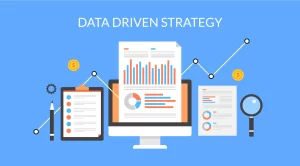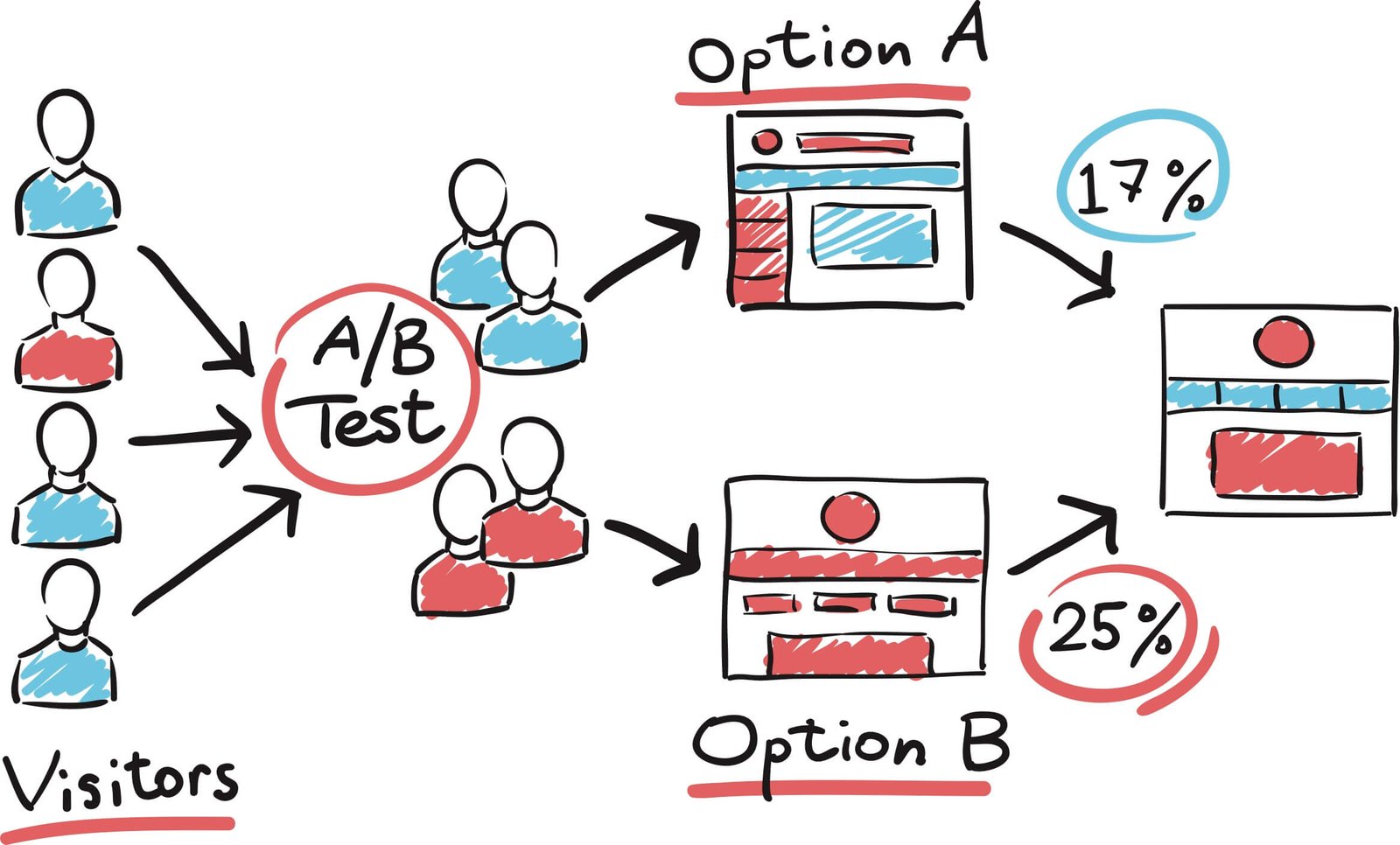The Ultimate Guide to A/B Testing: Boosting Your Online Success
In the fast-paced world of digital marketing, staying ahead of the competition is crucial. One strategy that can make a significant difference is A/B testing. If you’re looking to maximize your online success and drive results, this comprehensive guide to A/B testing is your roadmap to success.
What is A/B Testing?
A/B testing, also known as split testing, is a data-driven approach to improving your website’s performance. It involves comparing two versions of a webpage or an element (A and B) to determine which one performs better. By making informed decisions based on user behavior and engagement, you can optimize your website for higher conversions and user satisfaction.

The Benefits of A/B Testing
1. Increased Conversion Rates
One of the primary reasons to embrace A/B testing is the potential for skyrocketing conversion rates. By fine-tuning your website elements, you can guide your visitors towards the desired actions, such as signing up for newsletters, making purchases, or filling out contact forms.

A/B testing has a remarkable impact on increasing conversion rates, making it an indispensable tool for businesses striving to achieve their online goals. Here’s a more detailed look at how A/B testing contributes to this crucial aspect of digital marketing:
1. Pinpointing Optimization Opportunities
A/B testing allows you to pinpoint specific areas on your website that can be optimized for better conversions. Whether it’s your landing page, product descriptions, call-to-action buttons, or even the checkout process, A/B testing helps you identify elements that might be underperforming.
2. Testing Variations
Once you’ve identified these potential optimization opportunities, A/B testing enables you to create variations of these elements. For example, you can test different headlines, images, or button colors to see which ones resonate best with your audience.
3. Data-Driven Decisions
The beauty of A/B testing lies in its data-driven approach. It provides concrete evidence of what works and what doesn’t. By analyzing user behavior, you can make informed decisions about which variations are more effective in converting visitors into customers.
4. Continuous Improvement
A/B testing is not a one-time activity; it’s an ongoing process of continuous improvement. As you gather data and insights from your tests, you can iteratively refine your website to maximize conversion rates further. This iterative approach ensures that you’re always adapting to changing user preferences and market dynamics.
5. Personalization
Personalization is a key driver of higher conversion rates. A/B testing allows you to experiment with personalized content and experiences for different segments of your audience. Tailoring your website to individual preferences can significantly boost conversion rates as visitors feel a stronger connection to your brand.
6. Reducing Bounce Rates
Bounce rates, where visitors quickly leave your site without taking any action, can be a conversion killer. A/B testing helps you address the factors that contribute to high bounce rates, such as slow page load times, irrelevant content, or poor navigation. By optimizing these elements, you can keep visitors engaged and more likely to convert.
7. Mobile Optimization
With the increasing use of mobile devices, optimizing for mobile users is paramount. A/B testing allows you to create mobile-responsive designs and test their effectiveness in driving conversions on various screen sizes and devices.
8. Social Proof and Trust Signals
Incorporating social proof elements like reviews, testimonials, and trust badges can instill confidence in your visitors. A/B testing helps you find the best placement and design for these trust signals, which can significantly influence conversion rates.
In summary, A/B testing is a powerful technique that empowers businesses to fine-tune their websites and marketing strategies to achieve higher conversion rates. By systematically experimenting with different elements and analyzing user data, you can optimize your online presence and ultimately drive more conversions, leading to increased revenue and business success.
2. Enhanced User Experience
A/B testing helps you identify what resonates with your audience. By testing different layouts, images, and content, you can create a more user-friendly experience that keeps visitors engaged and encourages them to explore your site further.

A/B testing plays a pivotal role in enhancing the user experience on your website. A better user experience leads to increased engagement, higher satisfaction, and ultimately, improved conversion rates. Here’s a more detailed exploration of how A/B testing contributes to enhancing user experience:
1. Improved Page Load Times
One of the critical factors in user experience is how fast your webpages load. Slow-loading pages can frustrate visitors and lead them to abandon your site. A/B testing allows you to experiment with different optimizations, such as image compression, code minification, and content delivery networks (CDNs), to identify the most effective ways to reduce page load times.
2. Responsive Design Testing
In today’s mobile-centric world, a responsive web design is essential. A/B testing enables you to assess how different design elements adapt to various screen sizes and devices. You can experiment with responsive layouts and test their performance to ensure that your website is accessible and visually appealing on all platforms.
3. Navigation Enhancements
The ease with which visitors can navigate your website significantly impacts their overall experience. A/B testing helps you fine-tune your website’s navigation menu, layout, and structure. You can experiment with different menu styles, navigation placements, and intuitive pathways to guide users through your content seamlessly.
4. Content Relevance Testing
Relevant and engaging content is key to keeping users on your site. A/B testing allows you to test different content strategies, such as headlines, images, and video placements, to determine what resonates most with your audience. By delivering content that matches user intent, you enhance their experience and encourage them to explore further.
5. Personalization and Recommendation Engines
A/B testing can be used to experiment with personalization features and recommendation engines. By tailoring content and product recommendations based on user behavior and preferences, you create a more personalized and engaging experience. Users are more likely to convert when they see products or content that align with their interests.
6. Form Optimization
If your website relies on user-submitted forms, such as contact forms or registration forms, A/B testing can help optimize them. Experiment with different form lengths, fields, and layouts to reduce friction and encourage form completions. A streamlined form experience improves user satisfaction and conversion rates.
7. Error Handling and Messaging
A/B testing can also be used to refine error handling and messaging on your website. Test different error messages and the clarity of instructions provided to users when something goes wrong. A seamless error recovery process can prevent user frustration and abandonment.
8. Multilingual and Internationalization Testing
For websites catering to a global audience, A/B testing is invaluable for testing multilingual and internationalization features. Ensure that translations are accurate and culturally relevant, and experiment with language switchers and regional content variations to create a seamless experience for users from different regions.
In conclusion, A/B testing is a versatile tool that empowers businesses to enhance the user experience on their websites. By systematically experimenting with various aspects of design, content, and functionality, you can create a website that not only attracts visitors but also keeps them engaged, satisfied, and more likely to convert. An improved user experience is a cornerstone of online success in today’s competitive digital landscape.
3. Data-Driven Decision Making
Instead of relying on guesswork, A/B testing allows you to make decisions backed by concrete data. This minimizes risks and ensures that every change you make is in the best interest of your business.

A/B testing is a powerful methodology that empowers businesses to make data-driven decisions. This approach is rooted in the collection, analysis, and interpretation of data to guide choices, refine strategies, and maximize success. Here’s a more detailed exploration of how A/B testing contributes to data-driven decision making:
1. Hypothesis Formulation
At the heart of A/B testing is the formulation of hypotheses. This involves identifying specific changes or variations that you believe could improve user engagement, conversions, or other key performance indicators. These hypotheses serve as the foundation for your tests and the starting point for your data-driven journey.
2. Controlled Experiments
A/B testing allows you to conduct controlled experiments, wherein you make a single, well-defined change (the “B” variation) while keeping everything else constant (the “A” variation). This controlled environment ensures that any differences in outcomes are directly attributable to the specific change being tested.
3. Data Collection
During the A/B testing process, data is collected continuously. This data includes user interactions, behaviors, and engagement metrics related to both the “A” and “B” variations. Common metrics collected include click-through rates, conversion rates, bounce rates, and session durations.
4. Statistical Significance
To ensure the reliability of your data, A/B testing involves statistical analysis. Statistical significance is a critical aspect of data-driven decision making. It helps you determine whether the observed differences in performance between the two variations are statistically meaningful or merely due to chance.
5. Informed Conclusions
Once you’ve collected sufficient data and achieved statistical significance, you can draw informed conclusions. A/B testing tools typically provide detailed reports and visualizations that highlight the performance differences between variations. This data empowers you to make decisions based on evidence rather than intuition.
6. Identifying Trends and Patterns
A/B testing isn’t limited to binary “winners” and “losers.” It allows you to identify trends and patterns in user behavior. For example, you might discover that certain design elements consistently lead to higher engagement or that specific content resonates better with a particular audience segment.
7. Iterative Optimization
Data-driven decision making doesn’t end with a single A/B test. Instead, it becomes an ongoing process of iterative optimization. You can use the insights gained from each test to inform subsequent tests, refining your website, content, and marketing strategies over time.
8. Risk Mitigation
By relying on data, A/B testing mitigates the risks associated with making changes to your website or marketing campaigns. Instead of making major overhauls based on assumptions, you make incremental, data-backed adjustments that minimize the potential for negative outcomes.
9. Scalability
A/B testing is scalable, meaning it can be applied to various aspects of your online presence, from website design and content to email marketing and advertising campaigns. This scalability allows you to maintain a consistent data-driven approach across all facets of your digital strategy.
In summary, A/B testing is a cornerstone of data-driven decision making. It provides a structured framework for formulating hypotheses, conducting controlled experiments, collecting data, and drawing evidence-based conclusions. By leveraging data in this way, businesses can make informed choices that lead to continuous improvement, enhanced user experiences, and ultimately, greater online success.
How to Implement A/B Testing Effectively
1. Define Clear Objectives
Before you start A/B testing, it’s crucial to define clear objectives. What specific goals do you want to achieve? Whether it’s boosting sales, increasing sign-ups, or improving click-through rates, having a clear target in mind will guide your testing process.
2. Choose the Right Tools
Selecting the right A/B testing tools is essential for accurate results. Popular options include Google Optimize, Optimizely, and VWO. These tools offer a user-friendly interface and robust features to streamline the testing process.
3. Create Hypotheses
To conduct successful A/B tests, formulate hypotheses. Predict how a particular change will impact user behavior and conversion rates. These hypotheses will serve as the foundation for your experiments.
4. Split Your Audience
Divide your website visitors into two groups, A and B. Group A experiences the current version of your webpage, while Group B encounters the new variation you want to test. Ensure that the sample size is statistically significant for reliable results.
5. Run Controlled Experiments
Keep all variables constant except for the one you’re testing. This ensures that your results are attributed solely to the change you made. Monitor the performance of both versions closely.
6. Analyze the Data
Once you’ve collected enough data, analyze it meticulously. Look for patterns, trends, and statistical significance. Most A/B testing tools provide detailed reports to help you draw informed conclusions.
7. Implement the Winning Variation
After determining which version performed better, implement it on your website. Remember that A/B testing is an ongoing process, so continue testing and optimizing to stay ahead in the digital landscape.
Conclusion
In the competitive world of online business, A/B testing is your secret weapon for driving success. By systematically fine-tuning your website based on user data, you can achieve higher conversion rates, an improved user experience, and data-driven decision making. Start your A/B testing journey today, and watch your online presence thrive.






